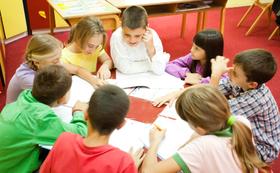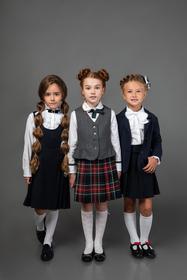Top Rankings
Forsyth R-III School District ranks among the top 20% of public school district in Missouri for:
Category
Attribute
Overall Rank
Highest overall rank (Top 20%)
Reading/Language Arts Proficiency
Highest reading/language arts proficiency (Top 20%)
Graduation Rate
Highest graduation rate (Top 10%)
For the 2025-26 school year, there are 2 public high schools serving 479 students in Forsyth R-III School District. This district's average high testing ranking is 9/10, which is in the top 20% of public high schools in Missouri.
Public High Schools in Forsyth R-III School District have an average math proficiency score of 52% (versus the Missouri public high school average of 36%), and reading proficiency score of 57% (versus the 51% statewide average).
Public High School in Forsyth R-III School District have a Graduation Rate of 92%, which is more than the Missouri average of 89%.
The school with highest graduation rate is Forsyth High School, with 90-94% graduation rate. Read more about public school graduation rate statistics in Missouri or national school graduation rate statistics.
Minority enrollment is 12% of the student body (majority Hispanic), which is less than the Missouri public high school average of 30% (majority Black).
Overview
This School District
This State (MO)
# Schools
4 Schools
753 Schools
# Students
1,272 Students
293,732 Students
# Teachers
100 Teachers
22,922 Teachers
Student-Teacher Ratio
13:1
13:1
Student By Grade
District Rank
Forsyth R-III School District, which is ranked within the top 20% of all 553 school districts in Missouri (based off of combined math and reading proficiency testing data) for the 2022-2023 school year.
The school district's graduation rate of 92% has increased from 90-94% over five school years.
Overall District Rank
#106 out of 555 school districts
(Top 20%)
(Top 20%)
Math Test Scores (% Proficient)
46%
40%
Reading/Language Arts Test Scores (% Proficient)
51%
43%
Science Test Scores (% Proficient)
45%
38%
Graduation Rate
92%
90%
Students by Ethnicity:
Diversity Score
0.21
0.49
% American Indian
2%
n/a
% Asian
1%
2%
% Hispanic
4%
8%
% Black
1%
15%
% White
89%
70%
% Hawaiian
n/a
n/a
% Two or more races
3%
5%
All Ethnic Groups
District Revenue and Spending
The revenue/student of $10,420 in this school district is less than the state median of $15,081. The school district revenue/student has declined by 9% over four school years.
The school district's spending/student of $14,138 is higher than the state median of $13,908. The school district spending/student has declined by 9% over four school years.
Total Revenue
$13 MM
$13,447 MM
Spending
$18 MM
$12,401 MM
Revenue / Student
$10,420
$15,081
Spending / Student
$14,138
$13,908
Best Forsyth R-III School District Public High Schools (2025-26)
School
(Math and Reading Proficiency)
(Math and Reading Proficiency)
Location
Quick Facts
Rank: #11.
Forsyth High School
(Math: 50-54% | Reading: 55-59%)
Rank:
Rank:
9/
Top 20%10
178 Panther St
Forsyth, MO 65653
(417) 546-6383
Forsyth, MO 65653
(417) 546-6383
Gr: 9-12 | 418 students Student-teacher ratio: 13:1 Minority enrollment: 12%
Rank: n/an/a
2404 State Hwy 248 Suite 4
Branson, MO 65616
(417) 320-5040
Branson, MO 65616
(417) 320-5040
Gr: PK-12 | 61 students Student-teacher ratio: 4:1 Minority enrollment: 10%
Recent Articles

Public School Open House & Enrollment Season Guide
A parent-focused guide to the public school open house and enrollment season, with expert questions, timelines, and decision tips.

School Supply Budget 2026: Fees, Books, Tech Costs
School Supply Budget 2026 guide for parents, covering fees, textbooks, technology, and hidden extras to plan ahead.

Education Funding in America (2025 Update)
Comprehensive 2025 update on public school funding in America, new federal and state policies, per-pupil spending, and equity challenges.





